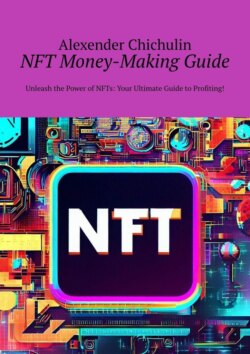Читать книгу NFT money-making guide. Unleash the power of NFTs: your ultimate guide to profiting! - - Страница 4
Chapter 1: Understanding NFTs
How do NFTs work?
ОглавлениеTo understand how NFTs work, let’s explore the underlying mechanisms and technologies that make them unique.
Blockchain Technology:
NFTs are built on blockchain technology, which is a decentralized and transparent digital ledger that records transactions across multiple computers. The most commonly used blockchain for NFTs is Ethereum, although other blockchains like Binance Smart Chain and Flow are also gaining popularity.
Smart Contracts:
NFTs utilize smart contracts, which are self-executing contracts with the terms of the agreement directly written into the code. Smart contracts enable the automation of certain actions and ensure that transactions occur as intended. They play a crucial role in defining the properties and functionalities of NFTs.
Token Standards:
In the Ethereum ecosystem, the most widely adopted standard for NFTs is the ERC-721 standard. It defines the basic functionality and structure of NFTs, including ownership, transferability, and metadata storage. There are also other standards like ERC-1155 that allow for the creation of both fungible and non-fungible tokens.
Unique Identification:
NFTs are distinguished by their unique identification, typically a long string of characters and numbers known as a token ID. Each token ID corresponds to a specific NFT and serves as its unique identifier on the blockchain.
Metadata:
NFTs contain metadata, which is additional information associated with the digital asset. Metadata can include details about the creator, title, description, image or video files, provenance, and other attributes that define the asset. This metadata is stored on the blockchain and can be accessed by anyone.
Provenance and Ownership:
One of the significant advantages of NFTs is their ability to establish provenance and ownership of digital assets. The blockchain records the entire history of ownership and transactions, providing a transparent and immutable record. This enables creators and collectors to verify the authenticity and ownership of an NFT.
Interoperability and Portability:
While NFTs are typically associated with a specific blockchain, there are initiatives and technologies being developed to enable interoperability and portability across different platforms. This means that NFTs from one blockchain can potentially be moved or utilized on another blockchain, expanding their reach and utility.
NFT Marketplaces:
NFTs are primarily bought, sold, and traded on NFT marketplaces. These platforms provide a digital marketplace where creators can mint and list their NFTs, and collectors can discover, purchase, and sell NFTs. Marketplaces handle the transactions, facilitate the transfer of ownership, and often provide a space for community engagement.
In conclusion, NFTs leverage blockchain technology, smart contracts, and unique identification to establish ownership, provenance, and authenticity of digital assets. Through NFTs, creators can tokenize their work, collectors can acquire unique digital items, and the blockchain ensures transparent and verifiable transactions in the digital world.
